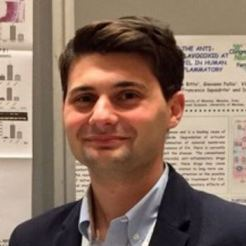Molecular Mechanism of Ischemia and Reperfusion Injury
A special issue of Biomedicines (ISSN 2227-9059). This special issue belongs to the section "Molecular and Translational Medicine".
Deadline for manuscript submissions: 30 June 2024 | Viewed by 1200
Special Issue Editors
Interests: biochemistry; neuroinflammation; pain
Special Issues, Collections and Topics in MDPI journals
Interests: veterinary pharmacology; toxicology; pharmacological activity of natural substances; nutraceuticals; dietary contaminants; animal welfare
Special Issues, Collections and Topics in MDPI journals
Interests: biochemistry; molecular mechanism; oxidative stress; endometriosis
Special Issues, Collections and Topics in MDPI journals
Special Issue Information
Dear Colleagues,
Ischemia and reperfusion–elicited tissue injury contributes to morbidity and mortality in a wide range of pathologies, including myocardial infarction, ischemic stroke, acute kidney injury, trauma, circulatory arrest, sickle cell disease and sleep apnea. Ischemia-reperfusion injury is also a major challenge during organ transplantation and cardiothoracic, vascular and general surgery. An imbalance in metabolic supply and demand within the ischemic organ results in profound tissue hypoxia and microvascular dysfunction. Subsequent reperfusion further enhances the activation of innate and adaptive immune responses and cell death programs. The generation of reactive oxygen species (ROS) increases due to a lower concentration of antioxidative agents in ischemic cells. ROS cause oxidative stress that promotes endothelial dysfunction, DNA damage, and local inflammatory responses. Inflammatory cascades and oxidative stress may subsequently induce a cytokine storm, resulting in cell death caused by damage to cellular structures. The reperfusion stage is dynamic and may persist for several days. Understanding the detailed mechanism of ischemia-reperfusion injury may provide a strong foundation not only for novel therapeutic opportunities, but also for injury prevention.
The current Special Issue focuses on molecular and cellular mechanisms underlining pathogenesis and novel therapeutic approaches targeting the ischemia and reperfusion injuries. We welcome research or review articles focusing on the topics.
Prof. Dr. Rosanna Di Paola
Dr. Enrico Gugliandolo
Dr. Roberta Fusco
Guest Editors
Manuscript Submission Information
Manuscripts should be submitted online at www.mdpi.com by registering and logging in to this website. Once you are registered, click here to go to the submission form. Manuscripts can be submitted until the deadline. All submissions that pass pre-check are peer-reviewed. Accepted papers will be published continuously in the journal (as soon as accepted) and will be listed together on the special issue website. Research articles, review articles as well as short communications are invited. For planned papers, a title and short abstract (about 100 words) can be sent to the Editorial Office for announcement on this website.
Submitted manuscripts should not have been published previously, nor be under consideration for publication elsewhere (except conference proceedings papers). All manuscripts are thoroughly refereed through a single-blind peer-review process. A guide for authors and other relevant information for submission of manuscripts is available on the Instructions for Authors page. Biomedicines is an international peer-reviewed open access monthly journal published by MDPI.
Please visit the Instructions for Authors page before submitting a manuscript. The Article Processing Charge (APC) for publication in this open access journal is 2600 CHF (Swiss Francs). Submitted papers should be well formatted and use good English. Authors may use MDPI's English editing service prior to publication or during author revisions.
Keywords
- molecular mechanism
- biochemistry
- One Health
- animals
- toxicology








